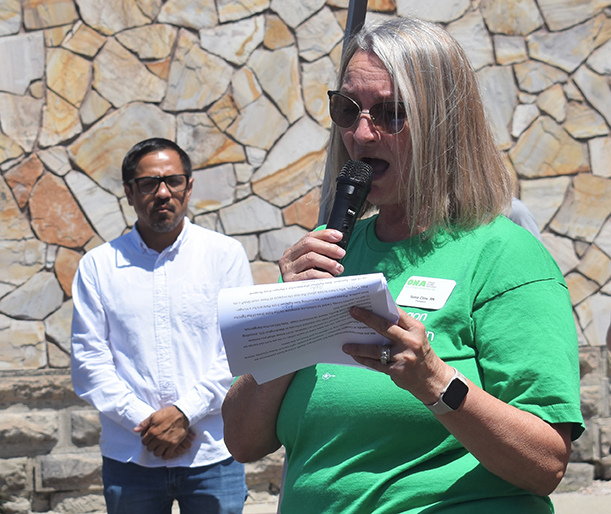Health official implores people to talk with contact tracers
Published 3:00 pm Friday, September 3, 2021

- Nancy Staten
By JAYSON JACOBY
jjacoby@bakercityherald.com
Nancy Staten is imploring Baker County residents who test positive for COVID-19 to help stem the virus, which spread more rapidly here during August than in any other month.
And all they have to do is answer a few questions.
Unfortunately, in Staten’s estimation, some people refuse to do so.
And their reluctance to talk to contact tracers is dulling what should be one of the county’s sharpest weapons in the fight against COVID-19, said Staten, director of the Baker County Health Department.
In contact tracing, a county or state employee telephones people who have tested positive and asks them about those they might have been in close contact with, and thus potentially exposed to the virus.
Contact tracers then try to contact those people to let them know about the possible exposures, Staten said.
Contact tracers don’t divulge the name of the person who tested positive, she said.
The value of this process, Staten said, is that it alerts people who might have been exposed to the virus. That can encourage them to be aware of any symptoms they might develop, and potentially result in them either being tested, or quarantining to avoid infecting others, Staten said.
“Contact tracing is one of the main ways we can mitigate the spread,” Staten said. “But we need our community’s help and cooperation.”
But recently, fewer people are willing to talk to contact tracers, or to suggest people who they might have been in close contact with, Staten said.
“While we understand that positive cases are trying to protect their friends and family from having to quarantine or that they are embarrassed that they may have exposed someone to COVID-19, it is important for your contacts to know they are at increased risk of having COVID-19,” she said in a press release.
Without effective contact tracing, Staten said it’s difficult to discern any patterns in how the virus is spreading.
A large majority of the county’s cases over the past month or so are considered “sporadic” — meaning they don’t have a definite source.
Ineffective contact tracing exacerbates that problem, Staten said.
Baker County reported a record number of cases — 300 — during August.
The previous monthly record was 196, in December 2020.
On Thursday, Sept. 2, the Oregon Health Authority (OHA) released its weekly report on breakthrough cases — people who test positive more than two weeks after being fully vaccinated.
Baker County has had 46 breakthrough cases through Aug. 28, the majority — 31 — being reported from Aug. 1-28, according to OHA reports.
Breakthrough cases account for about 5% of Baker County’s 947 cases from Jan. 1 through Aug. 28; the first county residents to be fully vaccinated reached that status in early January.
For the period Aug. 1-28, breakthrough cases accounted for 11.5% of the county’s 270 cases.
That’s a lower percentage than Oregon’s statewide figures. According to the OHA reports, breakthrough cases have constituted from 15.9% to 20% of weekly statewide cases since late July.
The 15.9% figure was for the most recent week, ending Aug. 28.
Staten pointed out that although COVID-19 vaccines aren’t 100% effective, the vast majority of fully vaccinated people who become infected have minor symptoms or none at all.
Although the OHA doesn’t list hospitalization data for breakthrough cases at the county level, statewide, 4.9% of breakthrough cases have been hospitalized, and 0.9% have died.








